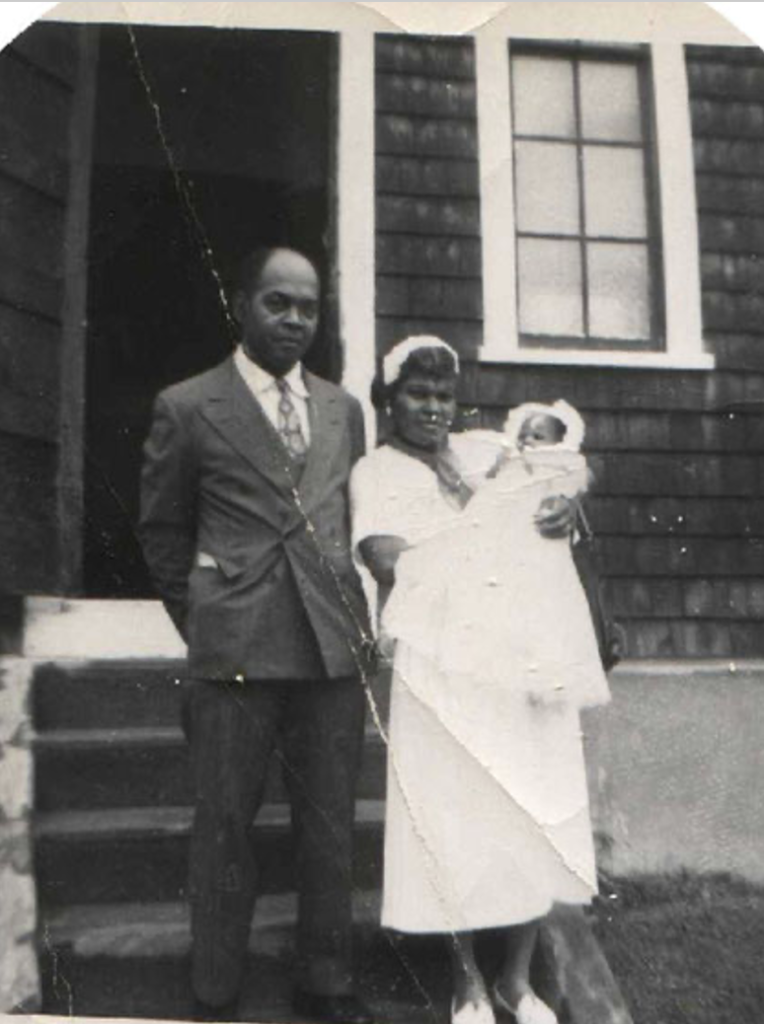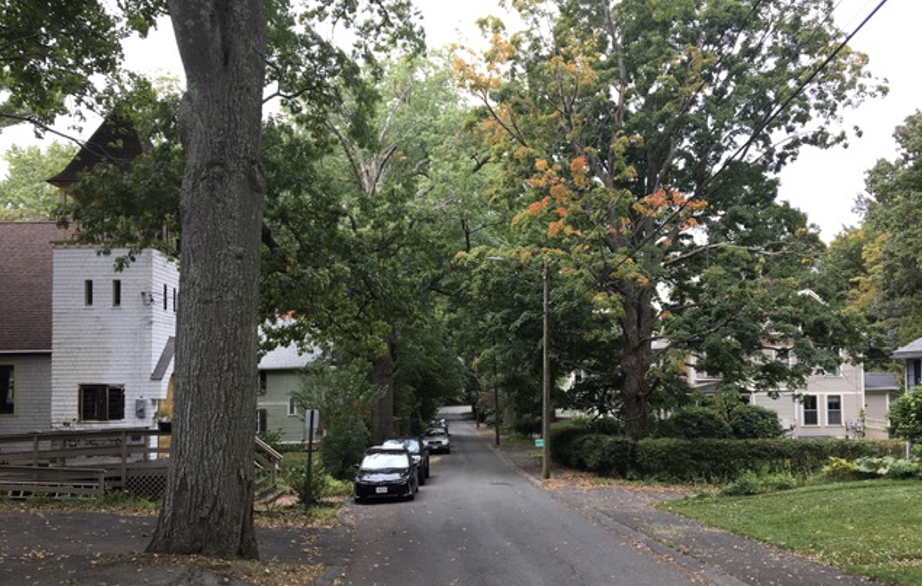Amherst History Month-by-Month: From Hope To Zion. Forward Onto Freedom

Goodwin Memorial A.M.E. Zion Church. Photo: https://goodwinmemorialchurch.org/
Within spitting distance of the Town Common and Amherst College, lie two of our town center’s interesting religious buildings, the Goodwin A.M.E. Zion Church, on Woodside Avenue, and the Hope Community Church, on Gaylord Street. Only a city block or two separates them and they are both worth a second look.
For a start, they are living testament to the claims in this country that where there is a Black church there will – by God’s grace – also be an established Black community. Forces related to sustained discrimination and systemic racism work against this but both buildings are small architectural gems that offer a deep dive into a rich history and exciting present-day vitality. In the case of the faith community of Goodwin AME, the church is still embedded in what became a historically Black, ethnically diverse neighborhood over time. I can attest to the power of this community when, before lock-down from COVID-19, many area churches came together with them to fundraise for the preservation of their church.
One wonderful thing about living and working amongst buildings that are historically and architecturally significant like these two churches is that they can help us make connections and amplify related topics in American history. Linked to these sacred places are other important valley-area resources like:
1. The ongoing documentation of the The Early History of Black Lives in the Connecticut River Valley (a photo from this website is included in the article)
2. Through examining the buildings more closely, we get to meet and learn about people who lived near these churches and continue to live here in town or are recalled in prayer and in worship and community building.
The Connecticut River Valley began to see the effects of the enslavement of African-Americans by the 1600s if not earlier. Some of the oldest free Black communities in North America are on the Eastern Shore of Maryland (late 1790s) or in the Tremé/Lafitte neighborhood of New Orleans (1812). After abolition but before the Civil War, in the 1840s, our region had a utopian community of abolitionists who created the Northampton Association of Education and Industry (NAEI), in what is now Florence, Massachusetts. The NAEI built their lives on principles of race, gender, and economic equality. Another legacy – celebrated in our town – is the participation of 23 Black men from Amherst who joined the Massachusetts 54th Infantry Regiment and 5th Cavalry during the Civil War. Their names are memorialized in the town’s Civil War Tablets (see also here and here).
But much was not positive or fair. Olivier “Landlord” Dickinson at the North Amherst Congregational Church kept the pews from being used by or sold to Black residents until 1841. Egregiously, in a misplaced effort to document local census data, town clerks through the 1800s could note a Black resident as “Irish” when asked to describe their race if they were other than white.
It is by way of these complicated pathways to the present that we can appreciate the significance of the two historically Black churches in Amherst. The Goodwin church, built originally on property owned by Amherst College, with a rustic-looking rubblestone foundation and Craftsman style visual details, is located off Woodside Avenue in a grove of trees, framed at the top of the driveway by two dawn redwood trees. Side streets in this residential neighborhood include Baker Street, Snell Street and Hazel Avenue. The area became an all-Black neighborhood after the Civil War when many African-Americans headed north to avoid the violence of the south.

AME Zion’s founder was “Moses” Goodwin (1854-1923) who owned a bicycle repair and locksmith shop in Amherst center. Like others migrating from the South, Goodwin had been born in South Carolina and moved to Amherst after the Civil War.” He met Anna Reed (1869-1943) who ran a successful boarding house for Amherst College students and they married in 1891. The current building dates to 1910.
In the 1930s, as the excoriating practice of redlining was instituted via a federal housing loan program, making home ownership almost impossible for African-Americans, this little corner of Black America was stable and welcoming. In 1933, the congregation welcomed the Rev. L. C. Jones as their new pastor who served until 1938.

Many properties near the church, after a successful listing in the National Register of Historic Places in 2000, are now part of the Westside Historic District. “The Baker Street houses are examples of modest Victorian styling, although some have had modern siding applied. The house at 21 Hazel Street is the district’s only example of an American Foursquare, with a hip roof. Most of the residents of this area were engaged in relatively low-wage occupations, including mail carriers, maids, janitors, and farmhands.

This neighborhood was also home to some locally famous African-Americans like Gil Roberts, a handyman who played banjo and collaborated on jazz riffs with Louis Armstrong. Roberts worked as a custodian at the Lord Jeffrey Inn’s social club (now 30 Boltwood), associated with Amherst College. His influence was legendary to the people who sought him out, where they often found him playing his banjo in the inn’s furnace room.

The Hope Community Church, across Northampton Road, on Gaylord Street, is, like the Goodwin Church, influenced by the Craftsman/Shingle architectural style with its main entrance located in a square tower to one side (seen below).

The signs to look for in a Craftsman-influenced building include “clustered windows, square piers in the tower’s open belfry beneath a pyramidal flaring roof, and small rounded rafter ends beneath the belfry.”

Younger than the A.M.E. church, Hope Community church was founded in 1912. Below are the founding members of the church at its dedication service.


A more recent photograph from the church website shows members of the Anderson family and its long-standing association with this faith community. Particular mention is given to the fact that an award for Civil Rights and Academic Achievement in the Amherst-Pelham school district is named for Norma Jean Anderson, who passed in 2006.

Additional Resources
Since the pandemic, the UMass Public History Program, the UMass Amherst Libraries and the Pioneer Valley History Network and local history organizations across Hampden, Hampshire and Franklin Counties [have] collaborated to launch the “Documenting the Early History of Black Lives in the Connecticut River Valley” pilot project. This community-based research project aims to document the lives of free, enslaved, and formerly enslaved Black residents of the Connecticut River Valley prior to 1900.
West Side Historic District, Amherst Massachusetts (Wikipedia)
All They Can Say Is No. (an article about Gil Roberts)
Visit ancestral-bridges.org to learn much more about some of the themes and people mentioned in this article. Currently, an Ancestral Bridges exhibit of historical photographs and artifacts is on display at the Amherst Historical Society & Museum, Saturdays, 11am-3pm, through November 5.
Amherst History Month-by Month is a monthly column on historic preservation, taking a look at Amherst’s historic buildings and neighborhoods and the stories behind them. It may also, from time to time, explore the challenges of historic preservation in a town such as ours that is so rich in historic resources. See previous columns here.
Hetty Startup lives and works in Amherst and is a member of the Amherst Historical Commission.

Thank you for writing this informative article. I’ve seen these small churches and visited one and your article tells me some of their history and missing history of Amherst.
Thanks, Janet. One of the things you learn when writing is that there is always a deadline. I came across more photographs and more information about the origins of the two churches after I had submitted it.
here is this link:
https://www.amherst.edu/amherst-story/magazine/issues/2010fall/collegerow/newport/node/248947
You only have negative history of the North Amherst Church. Soon after your citation the area’s anti slavery society grew out of there.
Hi Cinda – hmm, the article wasn’t about the North Amherst church. My reference to the North Amherst church (when it was a Congregational Church) needs to be read within the context of the time period I was describing. It is great you mention the information about the anti-slavery society here. I will look into that for another article – thank you! But my intention was to share something more specific than a general history of all Amherst churches. The North Amherst church (now the Amherst Korean Church) is important and I am glad they are putting together an application to the CPA for financial support for the preservation of their building.
One more resource for this subject, pertaining to the Valley is
https://www.gazettenet.com/Digging-into-the-past-Historic-Northampton-researches-history-of-slavery-in-the-city-48630149?utm_source=ActiveCampaign&utm_medium=email&utm_content=The+Valley+Advocate&utm_campaign=GZ+Valley+Advocate+11%2F24